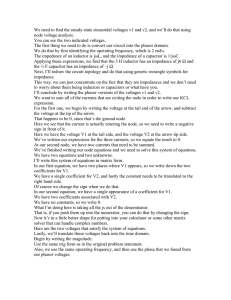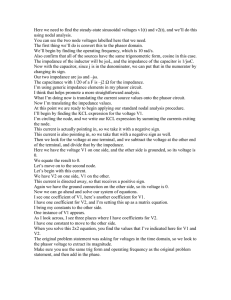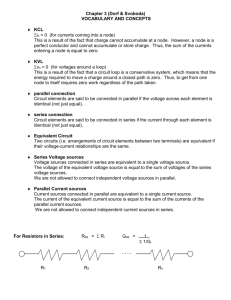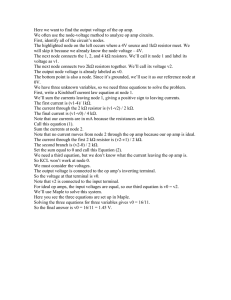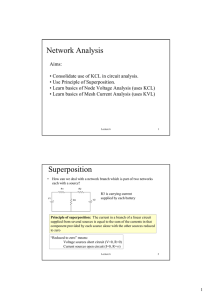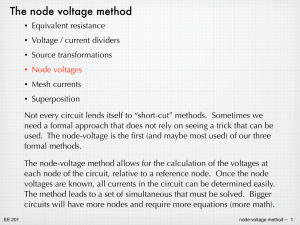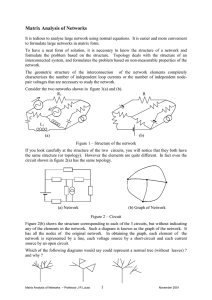We need to find the indicated currents i1 and i2.
advertisement
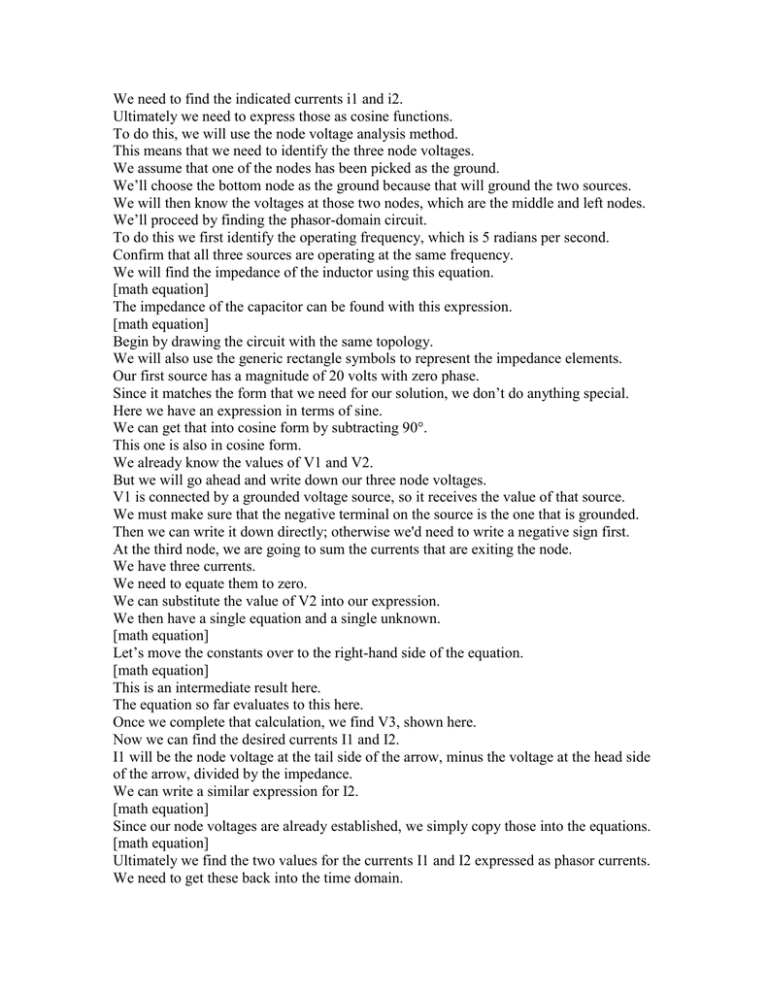
We need to find the indicated currents i1 and i2. Ultimately we need to express those as cosine functions. To do this, we will use the node voltage analysis method. This means that we need to identify the three node voltages. We assume that one of the nodes has been picked as the ground. We’ll choose the bottom node as the ground because that will ground the two sources. We will then know the voltages at those two nodes, which are the middle and left nodes. We’ll proceed by finding the phasor-domain circuit. To do this we first identify the operating frequency, which is 5 radians per second. Confirm that all three sources are operating at the same frequency. We will find the impedance of the inductor using this equation. [math equation] The impedance of the capacitor can be found with this expression. [math equation] Begin by drawing the circuit with the same topology. We will also use the generic rectangle symbols to represent the impedance elements. Our first source has a magnitude of 20 volts with zero phase. Since it matches the form that we need for our solution, we don’t do anything special. Here we have an expression in terms of sine. We can get that into cosine form by subtracting 90°. This one is also in cosine form. We already know the values of V1 and V2. But we will go ahead and write down our three node voltages. V1 is connected by a grounded voltage source, so it receives the value of that source. We must make sure that the negative terminal on the source is the one that is grounded. Then we can write it down directly; otherwise we'd need to write a negative sign first. At the third node, we are going to sum the currents that are exiting the node. We have three currents. We need to equate them to zero. We can substitute the value of V2 into our expression. We then have a single equation and a single unknown. [math equation] Let’s move the constants over to the right-hand side of the equation. [math equation] This is an intermediate result here. The equation so far evaluates to this here. Once we complete that calculation, we find V3, shown here. Now we can find the desired currents I1 and I2. I1 will be the node voltage at the tail side of the arrow, minus the voltage at the head side of the arrow, divided by the impedance. We can write a similar expression for I2. [math equation] Since our node voltages are already established, we simply copy those into the equations. [math equation] Ultimately we find the two values for the currents I1 and I2 expressed as phasor currents. We need to get these back into the time domain. We’ll use the magnitude and the cosine form. Our operating frequency is 5t. And then we insert the phase. We do the same for I2. And we are all finished.
